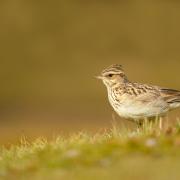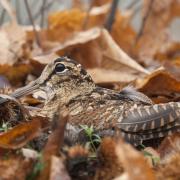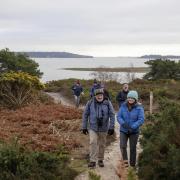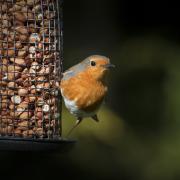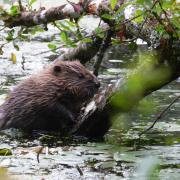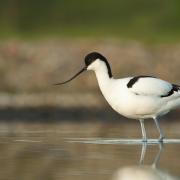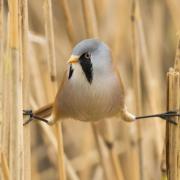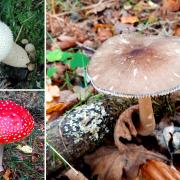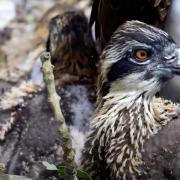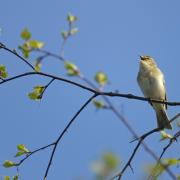With its natural beauty and amazing wildlife, it's not surprising that this glorious tract of land near Ballard Down tempted Colin Varndell to get out and about with his camera
With its natural beauty and amazing wildlife, it's not surprising that this glorious tract of land near Ballard Down tempted Colin Varndell to get out and about with his camera
If there were only one place you could visit in Dorset, Handfast Point and the coast path west of here would never disappoint you. It is a stunning area, which positively oozes natural beauty. You can look down on the rippling sea with pleasure boats and small yachts dancing the waves like toy boats way beneath you. The far-reaching views across Poole Harbour with Poole and Bournemouth beyond give a sense of being on top of the world. In summer, butterflies skip along the flower-rich meadows and the observer is left entranced and captivated by such a rich and diverse habitat.
The chalk cliffs of east Dorset represent the youngest rocks of the Jurassic Coast, having been deposited approximately 80 million years ago. Old Harry and Handfast Point are the famous landmarks which all sea travellers leaving or entering Poole Harbour will have admired. These remarkable chalk stack features tell the beginning of the story of Dorset's geological history, as from here, moving westwards we can progressively observe the fossil remains that take us further and further back in time.
This is a dangerous place to walk though, as the cliffs are precipitous, and there are no fences. The cliff edge here has often been described as being similar to the top of a very tall building. If you decide to walk here take care to keep to the path which is set well back from the edge. Dogs must be kept on leads at all times and children closely supervised.
Although it is the world-famous geology which is of such great importance here, there are also other attractions to enjoy. Above the chalk cliffs the immediate plateau of Old Nick's Ground leading up to Ballard Down provides marvellous views across to the Isle of White with the chalk cliffs of Tennyson Down and the Needles.
In addition to the spectacular vistas, this area is especially rich in flora and fauna. In the summertime, a carpet of wild flowers, crisscrossed with footpaths, smothers the plateau.
The succession of wild plants to be seen here begins with a yellow hue of cowslips in spring and ends in a blue haze with the blooms of devil's bit scabious in late summer.
Chalk-loving plants are abundant, including species such as ladies' fingers or kidney vetch, pyramidal orchid, lady's bedstraw, yellow-wort, marjoram, bladder campion, wild carrot and greater knapweed. The latter is an irresistible magnet for many insect species. In addition to the butterflies which sip nectar from the knapweed flowers, colourful beetles like the cardinal and longhorn are frequently seen intoxicated by the plant. Maritime plants thrive on the sloping ledges of the cliff edge, like viper's bugloss, weld, red valerian, sea campion and yellow-horned poppy.
A rare flower which occurs here is the Nottingham catchfly, so named because it was first found on the walls of Nottingham Castle. It does not catch flies, but releases a heavy perfume at night which attracts moths and other nocturnal insects to pollinate it.
Ballard Down and Old Nick's Ground support some of Dorset's rarest butterfly species. The Adonis blue, brown argus, Lulworth skipper and small blue can all be seen here. The Lulworth skipper is Dorset's very own butterfly species, which was first discovered at Durdle Door in 1832. Although many colonies of this insect have been found since, these are almost entirely confined to the Dorset coast. The Lulworth skipper can be distinguished from similar species by the circle of light spots on the forewing of the male. The small blue, as its name suggests, is a tiny butterfly which tends to occur in small colonies often centred around a single bush. If you catch a glimpse of a small blue, look closer, as there will usually be more nearby. The much larger marbled white butterfly retains a strong, healthy colony along Old Nick's Ground and on summer days they can be seen in their hundreds, tantalisingly flitting between the knapweeds. This is also one of the best sites in the county to observe the wall brown or to witness the arrival of the migrant clouded yellow butterfly.
Birds to watch out for here include cormorant and the majestic peregrine falcon. There is a cormorant colony on the near vertical cliff face near to the two chalk stacks known as the Pinnacles. Peregrines often rest on these chalk stacks and in the past they nested on the triangular pinnacle. These imposing falcons can be extremely vocal during the breeding season, frequently uttering their high-pitched 'kek-kek-kek-kek-kek' calls. Indeed, this is probably one of the best places in Dorset to observe the spectacular flying abilities of this bird - the fastest creature on Earth - capable of reaching speeds in excess of 180mph in a stoop.
Herring gulls glide effortlessly along the cliff edge, riding the thermals on warm summer afternoons, and great black-backed gulls and fulmar petrels may also be seen. On the patches of scrub, cock stonechats sit scolding anything that moves with their 'chat' alarm calls. Linnets and meadow pipits nest in the stands of gorse, and yellowhammers sing their monotonous songs from the thorn bushes.
Not only is Ballard Down a haven for wild plants and insects, it is also popular for human recreation and many people walk here throughout the year. This landscape is steadily changing though: even though the sheer cliffs appear to be stable, they are constantly being eroded by the sea. The remains of the stack next to Old Harry fell in 1896 and at some time in the future Old Harry will also topple into the sea. Handfast Point (also known as 'No-man's Land') was connected to the mainland as recently as 1770 and will itself eventually be divided into smaller chalk stacks.
So, whether you take the path from the Bankes Arms in Studland up to Handfast Point to study insects and wild flowers, or to enjoy the views or simply to take some exercise, this has to be one of the most exhilarating and interesting walks in the whole of Dorset. Go and immerse all your senses in its beauty and treasure the wonderful experience.







